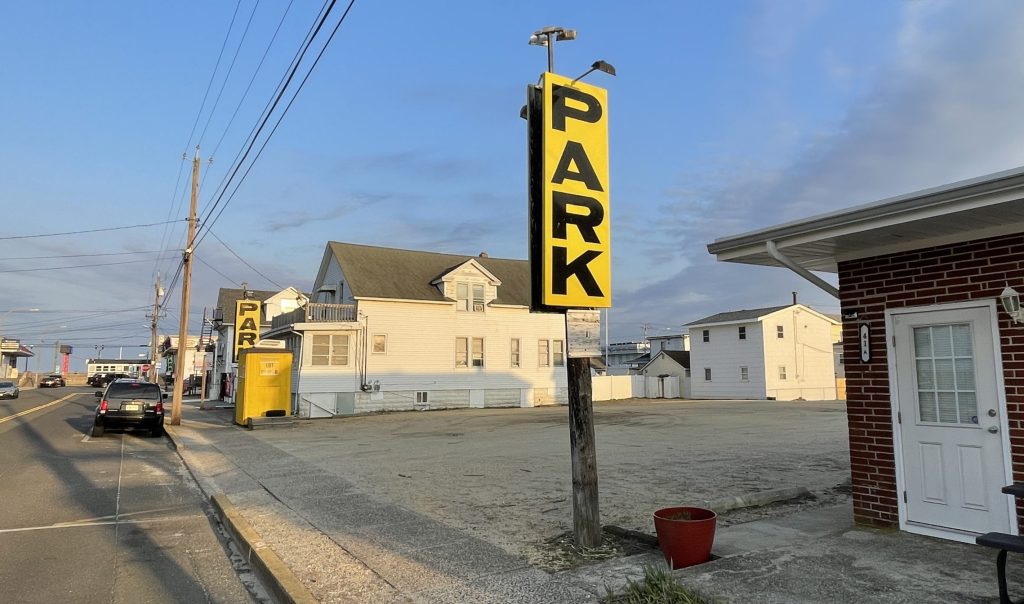The Seaside Heights planning board on Wednesday night approved an application by a developer proposing to construct a four-story residential complex on the site of an existing parking lot.
The property is located at 33 Hamilton Avenue, and is currently vacant.
“It seems to have always been vacant or a parking lot,” said project engineer Matthew Wilder, explaining that he sought historic aerials of the area. “I went back as far as 1931 and it has always been a vacant parcel.”
As wide-scale redevelopment projects are getting underway in Seaside Heights, the applicant, Mila Homes, will have a chance to convert the dirt-and-gravel lot into seven residences. The building will stand 40-feet tall, and its first floor will be a partially-enclosed parking area. The building will utilize the existing parking lot’s 22-foot driveway so vehicles can move in and out simultaneously. The developer agreed to number the spaces – two for each unit – to prevent issues with members of the public parking illegally.
The 80-by-100 foot lot will support the new building, which was designed by MODE Architects, of Asbury Park, which has worked on a number of high-profile projects statewide in recent years, including the Beach Club complex being built at the south end of the boardwalk.
There will be “coastal stone colors, composite cedar shakes and a modern composite wood element on the exterior,” said Jason Hanrahan, architect and owner of MODE. “We’re going to have a lot of white Azek accents, and have a modern feel with a black railing on the roof and exposed balconies.”
The building will have a lobby entrance at its front facade, and entry and exit will both occur on Hamilton Avenue, a two-way county street.
Hanrahan said the first level of the building will consist of three, two-bedroom units. The second floor will consist of four, three-bedroom units with a private mezzanine. Just two of the building’s four floors will be used as full dwelling units. The two-bedroom units will be 1,400 square feet in area, and the three-bedroom units will be 1,550 square feet.
“The sizes of these units are fairly spacious, they are not cramped,” said Hanrahan. “We’re not trying to squeeze anything in here.”
The board approved the project 7-0, and granted one minor variance for density – a regulation that requires a minimum lot area of 1,200 square feet per unit. This project, due to the size of the property, takes up 1,143 square feet per unit.

Advertisement

Ortley Beach & North Beaches
Landmark Ortley Beach Breakfast Spot Looks to Expand

Ortley Beach & North Beaches
‘Temporary’ 70-Foot Cell Tower on Route 35 in Ocean Beach OK’d to Return

Seaside Heights & Seaside Park
Beloved South Seaside Park Restaurant Will Remain Open As Developer Seeks to Demolish Block

Seaside Heights & Seaside Park
In Seaside Heights, A $50M Flagship Building Rises Over the Boulevard in a Famed Location

Police, Fire & Courts
Ocean County Sheriff Establishes Drone Command Center in Seaside Heights Amid New Video







